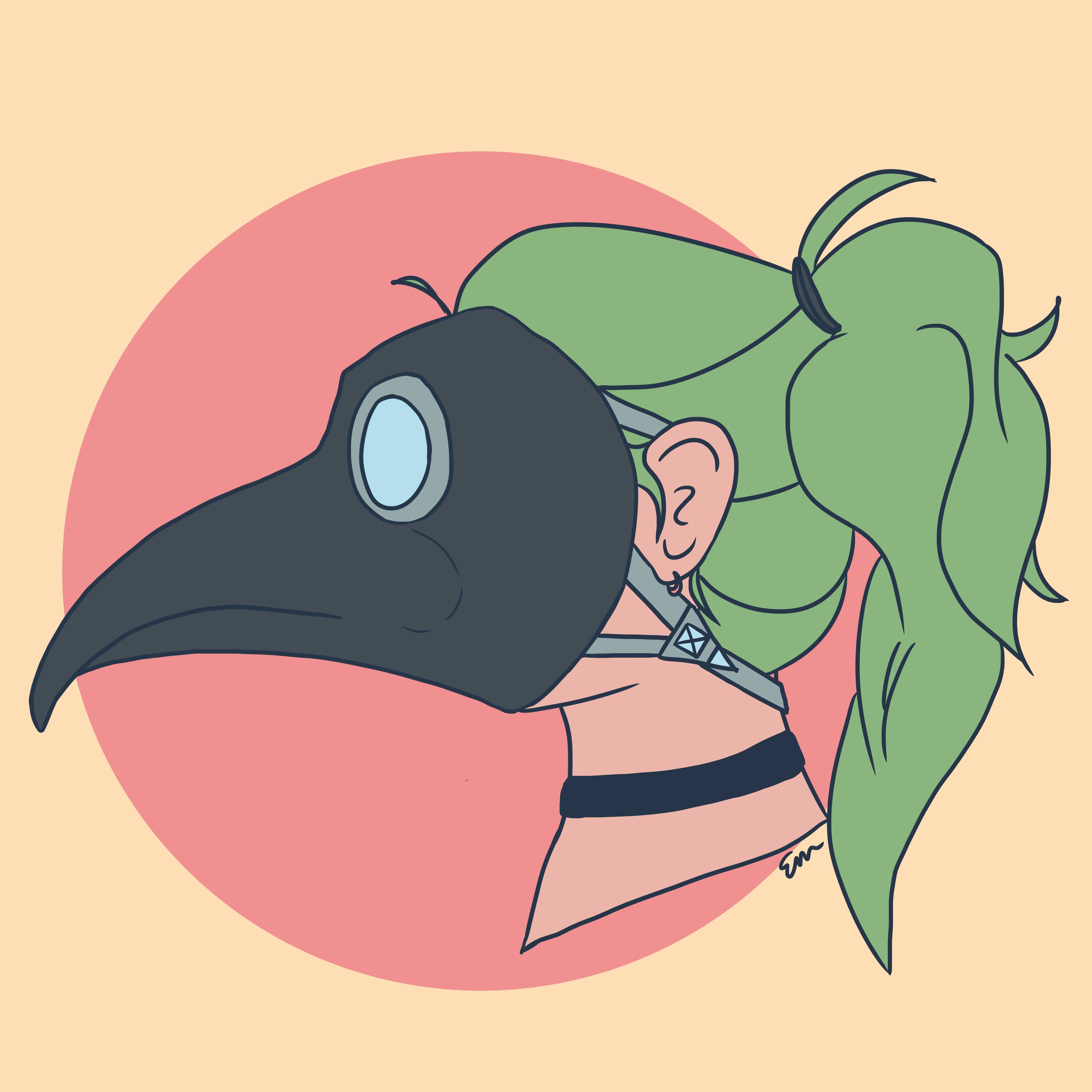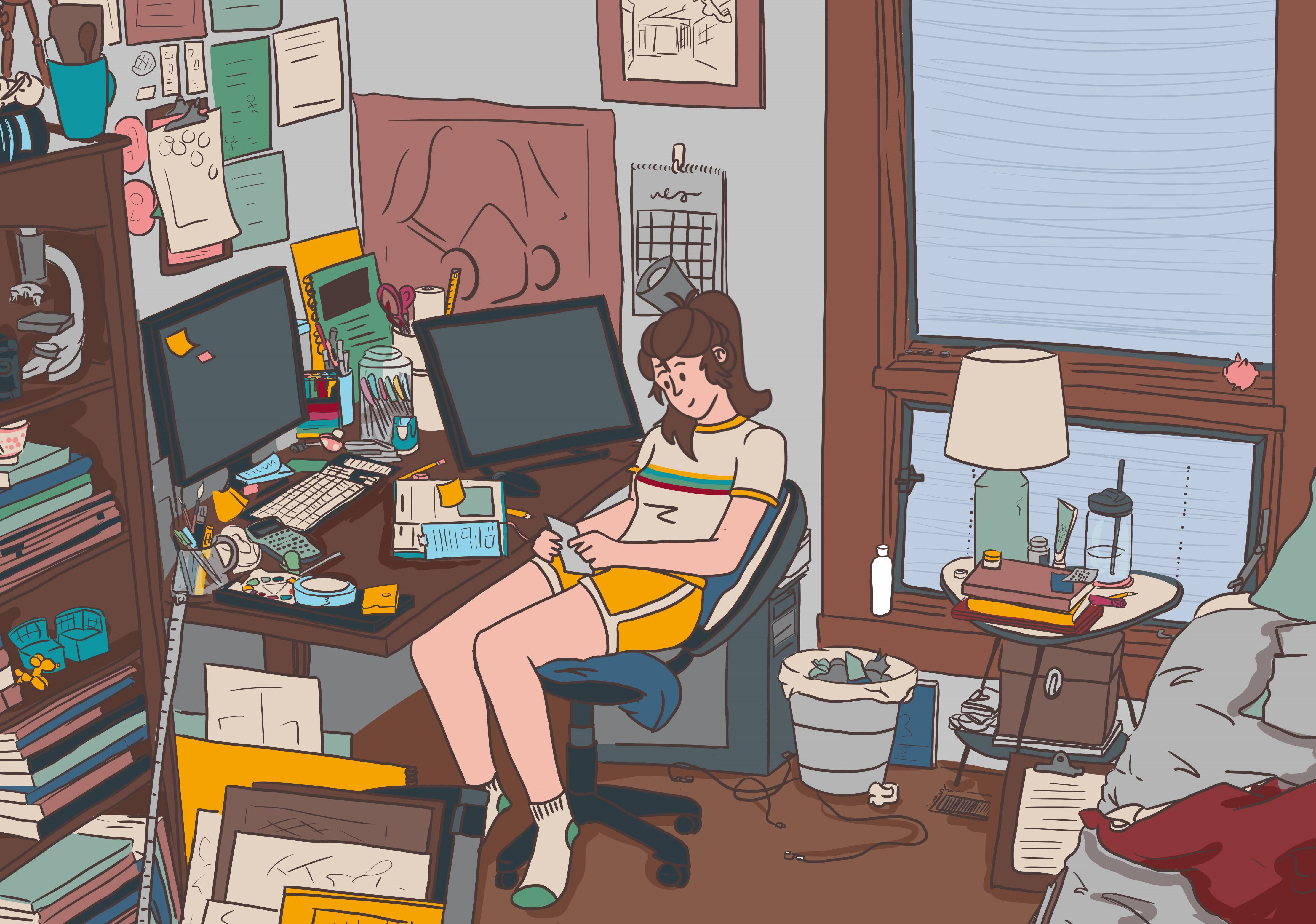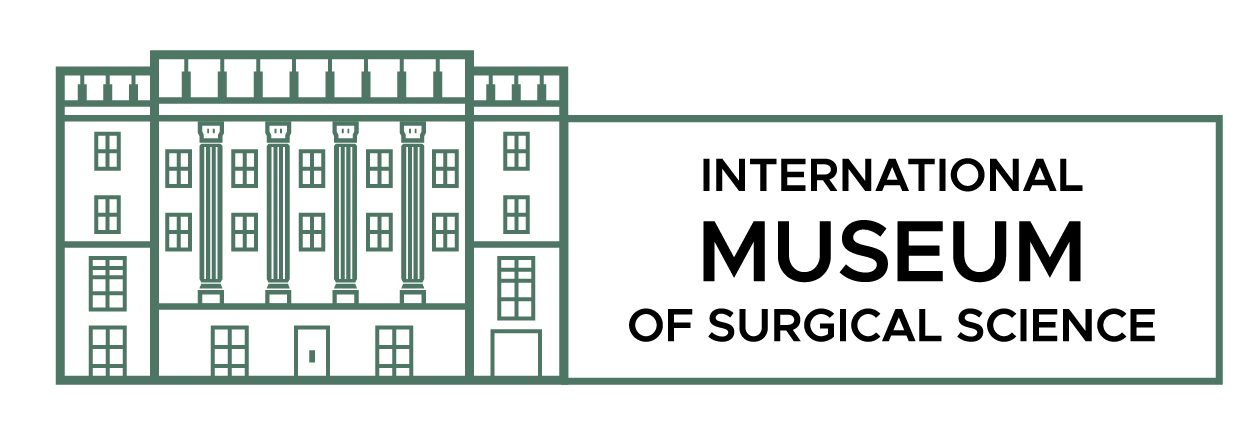Published by Emily Baughman
While I’ve been reflecting on my time as an education intern, I’ve been struggling with what I’ve wanted to say. When I started my internship a few months ago I could have never predicted where I ended up. I started by studying medical history and ended up living in a future chapter of it.

Drawing by Emily Baughman. Instagram: @emily.bari
I had never worked in a museum before, but I’ve loved them for years. There’s something so inherently fascinating to me about walking through a building with 100-year-old masterpieces, actual bone saws, or 68 million-year-old dinosaur bones. People get curious when they’re in a museum and that’s what I love about them. This is why I wanted to intern at the International Museum of Surgical Science. I wanted to work on growing my skills in writing and public speaking, but more importantly, I wanted to get people curious about the medical history I loved learning about.
To me, art and science combine together to create the best environment for growing curiosity. While artifacts show the reality of the past, artwork makes history feel alive. While shadowing tours during my internship, I noticed that artwork often led to the most visceral reactions from visitors. Watching people’s faces cringe while looking at a painting of an amputation is truly priceless. While many already know that anesthesia and cleanliness are incredibly important to modern surgeries, confronting the reality of the world before these practices were adopted helps form a new appreciation for them. You can show the surgical saws and describe the techniques of the past, but seeing it all in action changes everything. Seeing something in a museum makes history come to life more than a textbook ever could.

Drawing by Emily Baughman. Instagram: @emily.bari
During my own first practice tour, my voice was horribly shaky. Public speaking has never been my forte and the mix of nerves and excitement made it difficult to get through. It seemed like an impossible feat but it became easier with time. While my confidence as a speaker grew, I began to realize how much my background in biology had shifted my vocabulary. The use of jargon really runs wild in science. Getting out of that academic head space helped me to focus on clarity and how to be engaging. Science, art, and history all tell a story. Weaving a story together breeds more curiosity than lecturing about terminology. As I began to start to grow as a speaker, everything got a lot harder.
Eventually, we all began to live in medical history after coronavirus changed everything. Shifting to working online forced me to shift my focus on digital communication and writing. I quickly began to realize that writing to both educate and entertain is difficult. I have a tendency to write academically because that was the only experience I had. It was a welcome challenge to play with shifting my voice while writing. Working on developing my writing style was difficult, but working from home allowed me to incorporate my art into my writing. I adore art. While I made biology my focus in college, art always remained a part of my life and my education. Going to lab with paint on my pants was an unorthodox way to get a biology degree, but art and science always felt like a natural combination to me. This opportunity allowed me to marry my two loves together through researching, writing, and creating visuals for social media posts. While I’ve been painting and drawing for years, digital art is a newer medium for me. Creating social media posts with both a written and visual aspect pushed me to work out both of those creative muscles and grow my communication skills.

Drawing by Emily Baughman. Instagram: @emily.bari
As the time for my final project rolled around, the sad reality that the museum would not be able to open back up before the end of my internship became impossible to ignore. This greatly affected the type of educational activity I could make. Because I wouldn’t be able to interact with visitors, I worked on creating a print-out activity based on my love for bacteria. Loving bacteria may seem a bit weird, but they do a lot of good in the world. Bacteria help digest food, clean wastewater, and produce insulin to just name a few. Tangents about bacteria aside, I really enjoyed working on creating each little bacteria buddy as part of the activity. As I was creating my project, I was given the opportunity to create artwork for other at-home educational activities for the museum. Creating drawings for the at-home activities was one of my favorite projects I worked on as an intern. I could have never predicted that project back on the first day.
Being able to adapt is one of the most important lessons I took away from this experience. The International Museum of Surgical Science really embodies this idea of adapting both through their exhibits and their actions as a community. Medicine has been adapting since the dawn of humanity and will continue to do so. The last few months were jam-packed between finishing my biology degree and completing my internship in a new digital space. While a little unorthodox due to circumstance, each part of this internship set me up for success and helped me to grow. My confidence has grown exponentially since I started as an intern and I’m proud to carry it forward to the next endeavor.
Emily Baughman is the current Spring 2020 Education Intern at the International Museum of Surgical Science. She is in her senior year finishing a biology major at Elmhurst College. She enjoys creating artwork inspired by her love of science and medicine.


